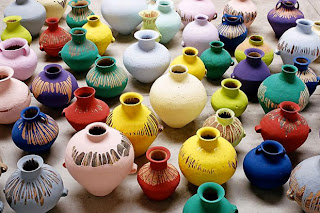Kitsch
The definition of Kitsch is that the art, objects or design are considered to be in poor taste because of excessive sentimentality, but sometimes appreciated in an ironic or knowing way. Yet, despite its status as a source of pleasure for a mass audience, kitsch is considered a negative product. It is a type of creation that reaffirms rather than challenges the collective norm, a source of entertainment in opposition to the elevated perception generated by high art.
Artwork that was a response to the 19th century art with aesthetics that convey exaggerated sentimentality was applied by the concept of Kitsch. Thus, Kitsch art is associated with sentimental art. [Kitsch, Wikipedia]
Below are some of the pictures I found based on the concept of Kitsch:
Reference:
Kitsch (n.d.). Retrieved 24 August, 2011, from
Kitsch (2004). Retrieved 24 August, 2011, from















